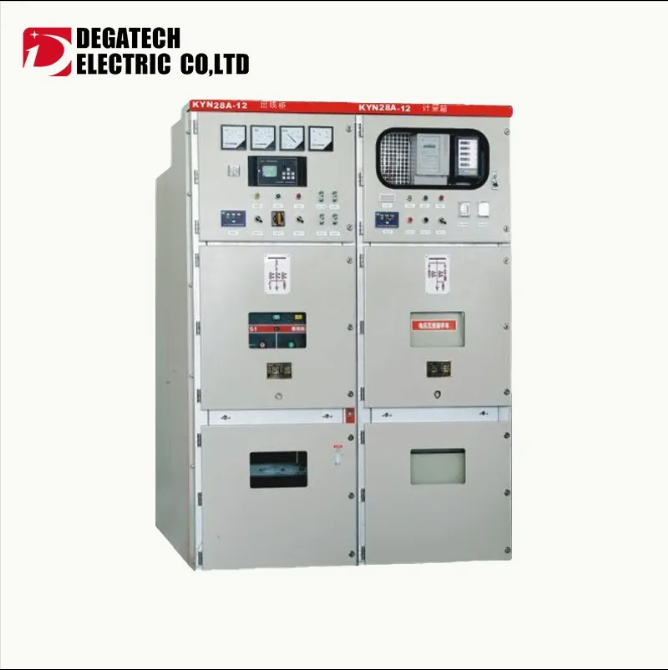Innovations in Eco-Friendly Switchgear and Controlgear for Modern Power Systems

As the global energy transition accelerates, manufacturers of switchgear and controlgear are under pressure to combine performance, reliability, and environmental responsibility. Modern power distribution demands equipment that not only protects and controls electricity but also reduces environmental impact throughout its lifecycle.
Low-voltage and medium-voltage switchgear have historically been evaluated primarily on electrical performance, safety, and reliability. However, recent technological advances and regulatory changes have shifted focus toward sustainability, driving companies to innovate in materials, design, and operational efficiency.
Why Green Switchgear Matters
Traditional switchgear components—metal enclosures, insulating materials, and mechanical contacts—contribute to carbon footprint and resource consumption. When installed across industrial, commercial, and residential infrastructures, the cumulative environmental impact is significant.
Green switchgear innovations aim to address:
-
Material efficiency: Use of recyclable metals, bio-based plastics, and reduced raw material consumption.
-
Energy efficiency: Designs that minimize losses during operation.
-
End-of-life recycling: Modularity and disassembly for easier reuse or recycling.
-
Hazardous substance reduction: Compliance with RoHS, REACH, and other environmental directives.
Implementing these strategies improves both corporate ESG performance and reduces long-term operational costs.
Key Innovations in Sustainable Switchgear
1. SF6-Free Insulation
SF6 gas, widely used in medium-voltage switchgear, is a potent greenhouse gas. Modern alternatives include:
-
Vacuum interrupters
-
Air-insulated designs
-
Solid insulation technologies
These alternatives significantly reduce greenhouse gas emissions while maintaining high reliability. Many leading manufacturers now provide SF6-free switchgear, meeting regulatory requirements and supporting corporate sustainability goals.
2. Solid Insulation and Epoxy Resin Components
Solid insulation systems, such as epoxy resin bushings, provide several benefits:
-
Environmentally safer than gas-insulated systems.
-
High thermal stability and electrical performance.
-
Reduced maintenance and longer service life.
-
Fully recyclable in some designs.
Epoxy resin components are widely used in transformers, switchgear panels, and distribution systems, offering durability and eco-friendly characteristics.
3. Digital Monitoring and Smart Systems
Integrating sensors, IoT modules, and digital twins enables:
-
Real-time monitoring of load, temperature, and faults.
-
Predictive maintenance to reduce downtime and extend equipment life.
-
Enhanced energy efficiency through optimized operation.
Smart switchgear reduces operational waste and enhances grid resilience, especially in industrial and renewable energy applications.
4. Lifecycle Assessment and Eco-Design
Manufacturers increasingly adopt Lifecycle Assessment (LCA) and eco-design principles to evaluate environmental impact from production to disposal:
-
Material selection and sourcing impact
-
Energy use during operation
-
End-of-life recyclability
Standards such as IEC TS 63058 guide low-voltage switchgear manufacturers in implementing sustainable practices while maintaining performance and compliance.
Applications Across Industries
Eco-friendly switchgear is suitable for:
-
Industrial Plants: Reliable, low-maintenance power distribution with reduced environmental impact.
-
Renewable Energy Facilities: Solar, wind, and hybrid power systems benefit from SF6-free and solid-insulated solutions.
-
Commercial Buildings: Modern office complexes prioritize sustainable electrical infrastructure to meet green building certifications.
-
Utilities and Grid Operators: Reduce emissions, comply with regulations, and integrate smart monitoring systems.
These applications demonstrate that sustainability and reliability are not mutually exclusive; they can coexist to provide a high-performing, eco-conscious power system.
Choosing the Right Green Switchgear
When selecting environmentally friendly switchgear, consider:
-
Voltage and Current Ratings – Match system requirements to ensure safe and efficient operation.
-
Insulation Type – Choose between SF6-free, solid insulation, or vacuum interrupters based on environmental goals.
-
Monitoring Capabilities – Integrate smart modules for predictive maintenance and energy efficiency.
-
Compliance and Certification – Ensure equipment meets relevant environmental and safety standards.
-
Lifecycle and Recycling Options – Evaluate modularity, end-of-life disposal, and recyclability.
A well-chosen green switchgear solution supports both operational reliability and sustainability objectives.
Commercial Advantages for Manufacturers and Clients
Adopting sustainable switchgear provides tangible benefits:
-
Brand differentiation in a competitive market
-
Cost savings through energy-efficient designs and reduced maintenance
-
Compliance with global environmental regulations
-
Enhanced corporate responsibility and ESG reporting
-
Future-proofing infrastructure for evolving grid requirements
Manufacturers that integrate sustainability into design, production, and service gain a competitive edge in modern power system markets.
- Art
- Causes
- Crafts
- Dance
- Drinks
- Film
- Fitness
- Food
- Jogos
- Gardening
- Health
- Início
- Literature
- Music
- Networking
- Outro
- Party
- Religion
- Shopping
- Sports
- Theater
- Wellness



